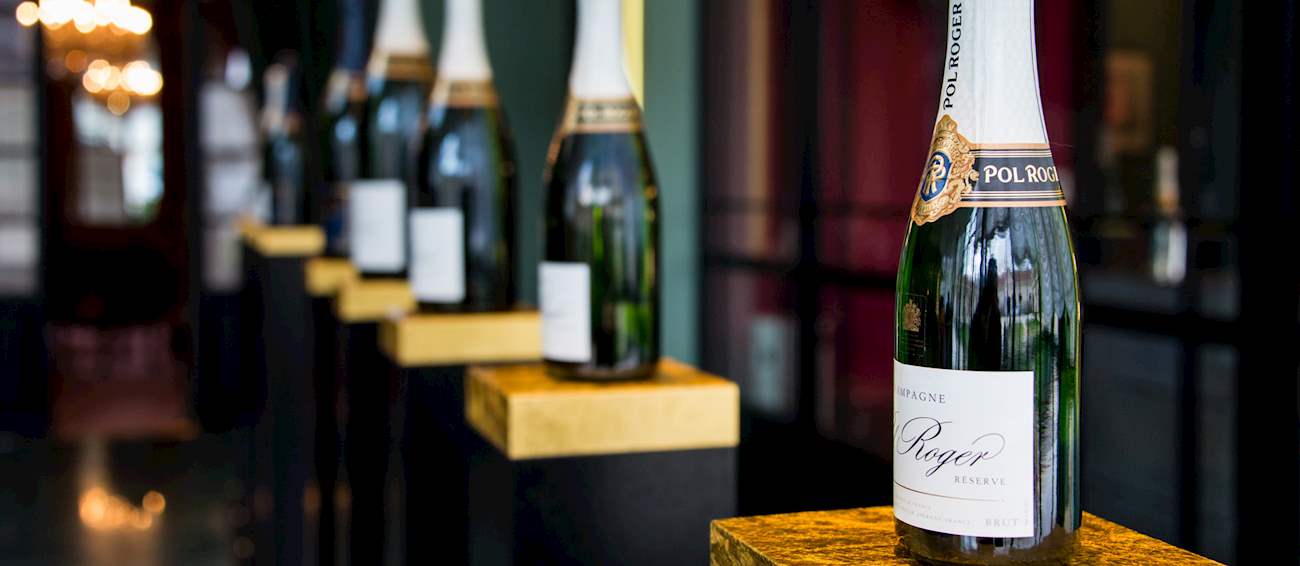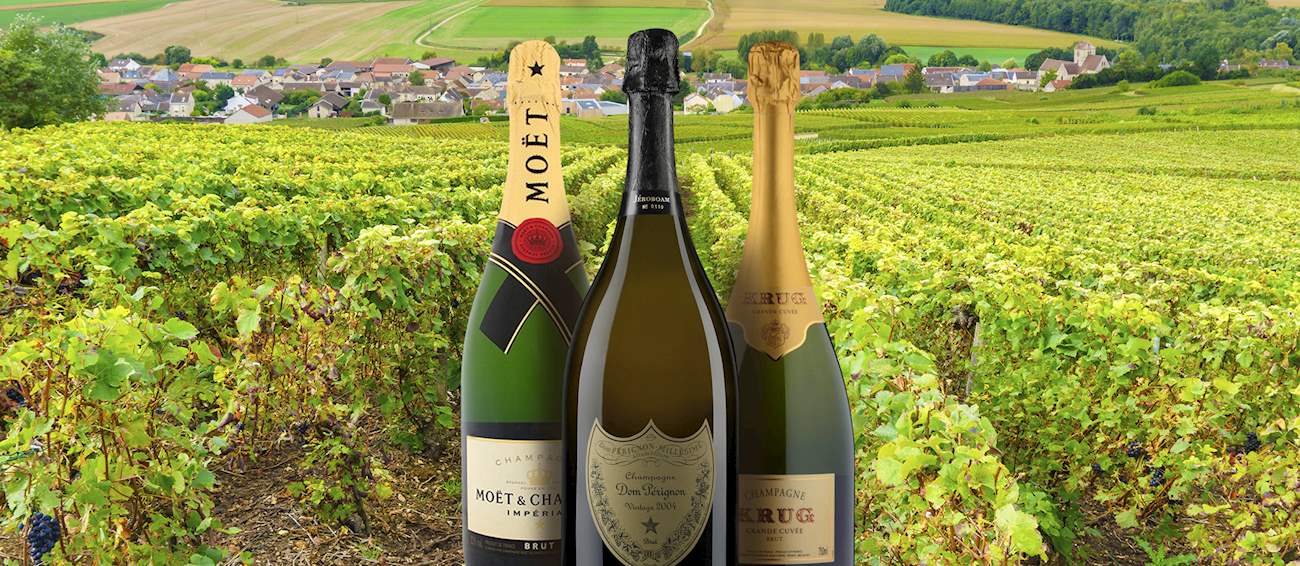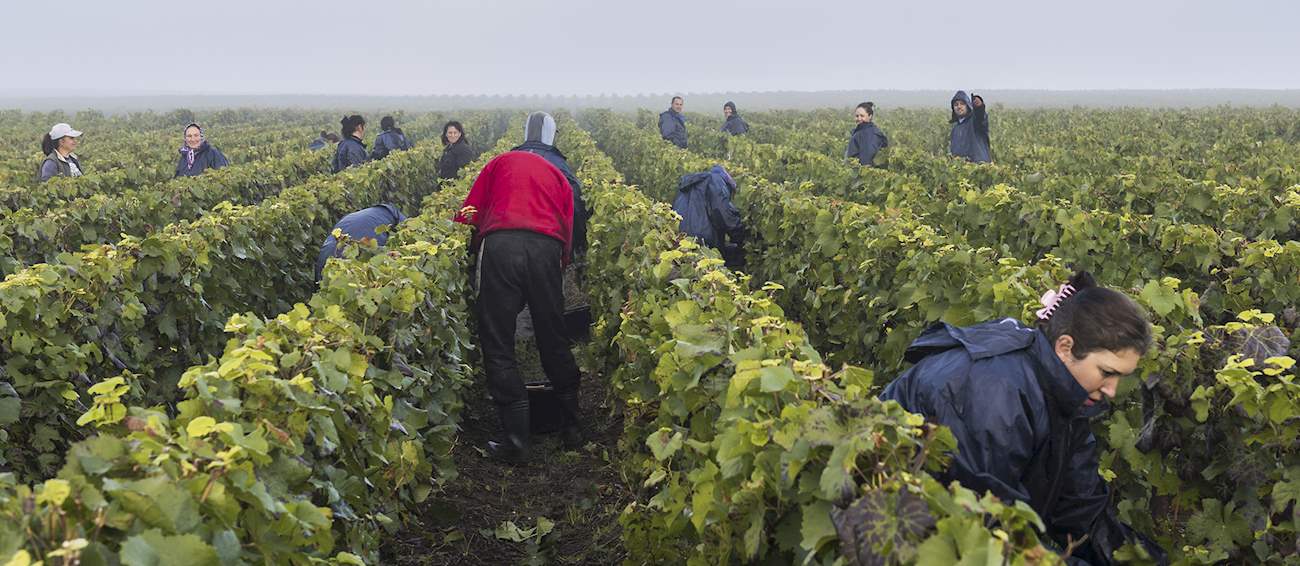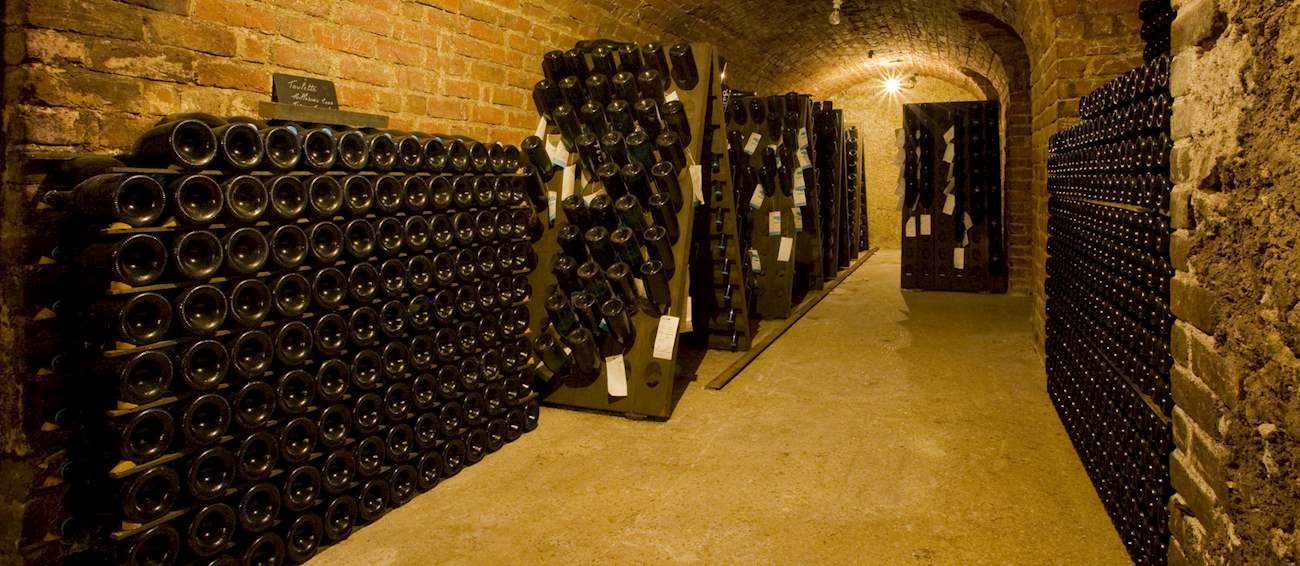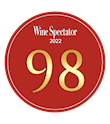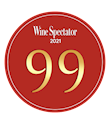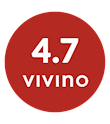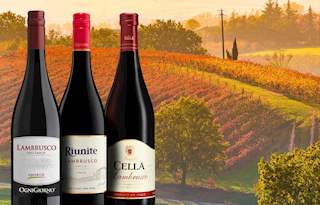Popularly known as the gold standard of sparkling wine, true Champagne only comes from the actual Champagne region in France. It is produced using the so-called méthode Champenoise; the process in which secondary fermentation is done in the bottle with the addition of yeast and rock sugar, and it is made with the basic, traditional blend of Chardonnay, Pinot Noir, and Pinot Meunier, all of which are indigenous to the Champagne region.
However, there are four other permitted grape varieties in the Champagne AOP - Pinot Gris, Pinot Blanc, Petit Meslier and Arbane - but these are rarely mentioned as they're almost never used for sparkling wine production outside of France. Varietal Champagne made with solely Chardonnay grapes is designated as Blanc de Blancs, while the one produced by the fermentation of Pinot Meunier and Pinot Noir is called Blanc de Noirs.
When young, a classic Blanc de Blancs is restrained and elegant, but with aging, it develops a mouth-coating brioche richness that overlays its intense, supple fruitiness. Read more
It is also lighter in body, and thus perfect for lighter meals, such as soups and seafood. On the other hand, Blanc de Noirs is considered to be richer in taste and typically showcases a bit more body and a vibrant red fruit character, which makes it a worthy match for foie gras in all its forms, but it can also be paired with hearty meat-based dishes.
Based on their terroir-driven complexity, other styles of Champagne range from lean and crisp with lots of lemons and green apples to rich and full with aromas of toffee, brioche, and even baked apples, while rosé Champagne displays more red fruit and berry aromas.
Established as an iconic drink of exquisite refinement during the French Belle Époque in the late 19th century, Champagne remains the preferred choice for celebrations of all kinds, standing alone and unmatched among a plethora of sparkling wines produced worldwide.
Part of
Flirtini
The unusually named Flirtini is a mixed drink made with a combination of vodka, champagne, and pineapple juice. The ingredients are poured over ice in a ... Read more
Russian Spring Punch
Russian Spring Punch is a cocktail made with a combination of vodka, crème de cassis, sugar syrup, lemon juice, and sparkling wine. In order to prepare ... Read more
Prince of Wales
Prince of Wales is a cocktail with several variations, but it is most often prepared with a combination of a liqueur such as Maraschino, champagne, Angostura ... Read more
French 75
French 75 is a classic cocktail made with gin, lemon juice, sugar syrup, and champagne. To prepare it, gin, lemon juice, and sugar syrup are shaken with ice, ... Read more
Serve with
Dim sum
Dim sum is a variety of bite-sized food that is usually served with tea. It can range from savory dumplings, buns, and noodle rolls to sweet puddings and tarts. The term ... Read more
Croissant
These flaky, golden-colored, crescent-shaped pastries are best made with pure butter and a slightly sweet yeast dough. If made properly, the yellow-white interior should ... Read more
Pommes frites
There are not many dishes in the world that have risen to the popularity of pommes frites. This simple dish is made out of potatoes that are cut into lengthwise strips ... Read more
Éclair
These elongated pastries with an appealing glaze, a crispy exterior, a soft doughy interior, and a sweet, creamy center originated in France at the turn of the 20th century.... Read more
Best Champagne
Louis Roederer
2012 Cristal Brut

Krug
Grande Cuvée 172ème Édition

Champagne Billecart-Salmon
2002 Le Clos Saint-Hilaire

Louis Roederer
2008 Cristal Vintage Brut

Krug
2008 Vintage

Krug
2008 Clos du Mesnil

